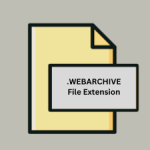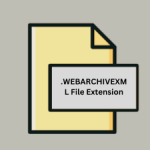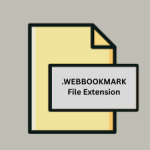.XUL File Extension

What is an XUL file?
.XUL files are used for defining user interfaces in applications, particularly those developed using Mozilla technologies like Firefox and Thunderbird. XUL stands for XML User Interface Language, and these files describe the layout and behavior of user interfaces in a structured, XML-based format.
More Information.
XUL was first introduced in the early 2000s with the Mozilla Application Suite, and it became a core technology in Mozilla’s products. The primary purpose of XUL was to enable developers to build rich, customizable user interfaces for applications and extensions, leveraging the XML format to define UI elements and their interactions.
Origin Of This File.
The .XUL file extension was introduced by Mozilla as part of their platform for creating cross-platform applications. It was designed to allow developers to create user interfaces in a way that is independent of the underlying operating system.
File Structure Technical Specification.
- Format: XML
- Content: XUL files contain XML markup that describes various UI components, such as windows, dialogs, buttons, and menus. These files include tags and attributes that define the layout and behavior of these components.
- Syntax: XUL syntax is similar to HTML but is tailored for defining application interfaces. It includes specific tags like
<window>,<button>, and<textbox>, along with attributes for customization.
How to Convert the File?
Windows
- Convert to HTML/CSS/JavaScript:
- Manual Conversion: Open the .XUL file in a text editor and manually rewrite the XUL markup into HTML, CSS, and JavaScript. This process involves mapping XUL elements to equivalent HTML tags and handling styling and scripting accordingly.
- Use Tools: There are no specific tools for direct XUL to HTML conversion, so manual adaptation is often necessary.
Linux
- Convert to HTML/CSS/JavaScript:
- Manual Conversion: Similar to Windows, manually translate the XUL content into HTML, CSS, and JavaScript. Linux text editors and IDEs like Vim, Emacs, or Visual Studio Code can assist in this process.
- Scripted Conversion: Write a custom script or use existing ones to automate parts of the conversion process, though this may require significant effort to handle all XUL features.
MAC
- Convert to HTML/CSS/JavaScript:
- Manual Conversion: Use text editors or IDEs such as TextEdit, Sublime Text, or Visual Studio Code to manually rewrite XUL code into HTML/CSS/JavaScript.
- Scripted Conversion: Like other platforms, a custom script or tool may be used for automating parts of the conversion process, but manual adjustments are likely needed.
Android
- Convert to Web Application:
- Adapt XUL to HTML/CSS/JavaScript: Since Android does not natively support XUL, convert the XUL file to a web-compatible format (HTML/CSS/JavaScript) and then wrap it in a WebView or similar component in an Android application.
- Cross-Platform Tools: Consider using cross-platform development tools like React Native or Flutter to create an app that can use web technologies.
IOS
- Convert to Web Application:
- Adapt XUL to HTML/CSS/JavaScript: Convert XUL to a web-compatible format and use WebView in an iOS application to render the content.
- Cross-Platform Tools: Similar to Android, use tools like React Native or Flutter for building iOS applications with web technologies.
Others (General Approach)
- Web-Based Conversion:
- Manual Adaptation: Translate XUL into HTML/CSS/JavaScript manually. This approach is generally applicable across various platforms.
- Web-Based Applications: For environments that support web technologies, convert the XUL file to a web-compatible format and integrate it accordingly.
Advantages And Disadvantages.
Advantages:
- Cross-Platform Compatibility: XUL allows for the creation of user interfaces that can run across different operating systems.
- Customizability: Developers can easily customize and extend the user interface of Mozilla-based applications.
- Integration: XUL integrates well with JavaScript, allowing for dynamic and interactive UIs.
Disadvantages:
- Deprecation: XUL has been deprecated in modern versions of Firefox and other Mozilla products, limiting its use to legacy applications.
- Complexity: For new developers, XUL might have a steeper learning curve compared to more modern UI frameworks.
How to Open XUL?
Open In Windows
- Mozilla Applications: Older versions of Firefox and Thunderbird.
- Text Editors: Any text editor or IDE that supports XML, such as Notepad++ or Visual Studio Code.
Open In Linux
- Mozilla Applications: Older versions of Firefox and Thunderbird.
- Text Editors: Any text editor or IDE that supports XML, such as Gedit or Atom.
Open In MAC
- Mozilla Applications: Older versions of Firefox and Thunderbird.
- Text Editors: Any text editor or IDE that supports XML, such as TextEdit or Sublime Text.
Open In Android
- No Native Support: XUL files are not directly supported on Android devices.
- Workaround: Viewing or editing XUL files would require a text editor app that supports XML file types.
Open In IOS
- No Native Support: XUL files are not directly supported on iOS devices.
- Workaround: Viewing or editing XUL files would require a text editor app that supports XML file types.
Open in Others
Web Browsers: XUL files can be viewed in older versions of Mozilla-based browsers that still support XUL, though modern browsers do not support this format.













